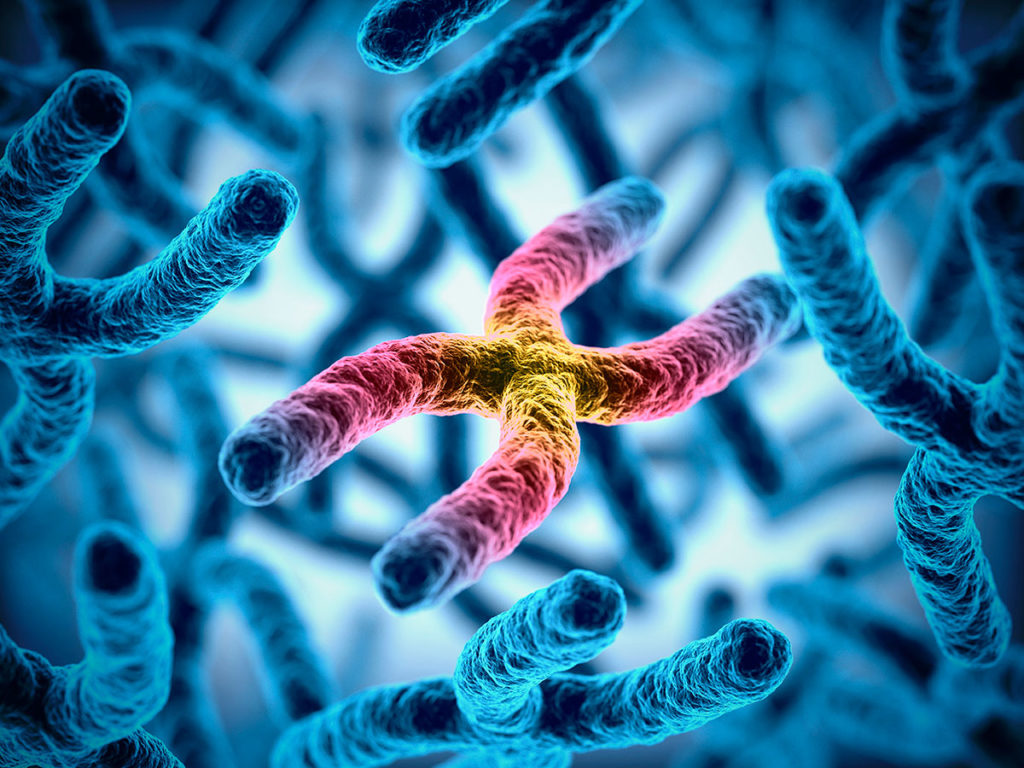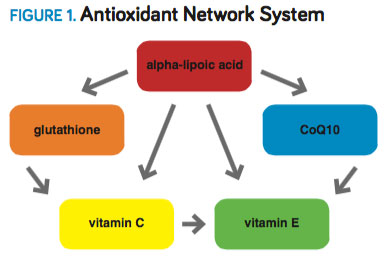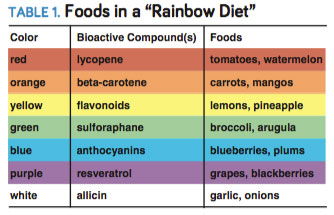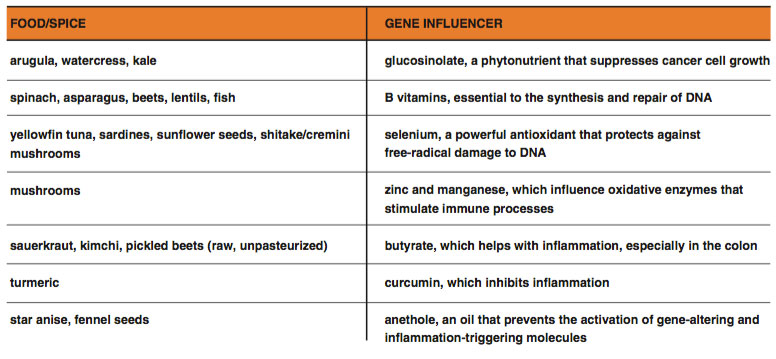
Epigenetics and Food
When conversations turn to health, it doesn’t take long for the topic of genetics to surface. Comments like “It’s in my genes” or “Well, my parents had heart disease” seem to flow off the lips when we describe our current health status.
But what exactly is the influence of genetics on our health? A new branch of study called epigenetics is starting to provide intriguing answers.
Epigenetics,
or “control above genetics,” studies how environmental signals influence gene “expression,” the process of genes transmitting instructions to the molecules that make up all living things. Epigenetics is part of a new understanding of gene workings which challenges the long-held belief that DNA controls biology.
This insight is vitally important to fitness and wellness professionals because it suggests that people can improve their lives through direct action and are not shackled by genetic determinism, which became popular in the time of Darwin in the 1800s and of Watson and Crick in the 1900s. Scientists used to believe that genes determined the fates of living things, but they now know that genes do not turn themselves on or off. There must be an environmental signal to trigger gene expression.
Triggers can come from diet, physical activity and the environment we live in. Fitness pros who understand the broad outlines of epigenetics will have a much stronger foundation for encouraging their clients to see that DNA does not have to limit their potential.
The Roots of Epigenetics
Many of today’s genetic breakthroughs trace back to the Human Genome Project of the late 1980s, which set out to identify and map every human gene. You may recall front-page newspaper articles excitedly informing the public as scientists isolated individual genes one by one. The idea was that knowing the blueprint of the human genome would broaden our understanding of what physically makes a human being, setting the stage for us to develop genetic methods for curing diseases.
Some scientists expected to discover well over 100,000 genes in the human genome, but the final count came in under 25,000. This was a surprise because it was the same number of genes a rodent has, and only 1,000 more genes than a worm has. That’s when reality set in: The complexity of the human being does not come directly from genes. What’s more, as research advances, it’s becoming clearer that gene mutations are not the only causes of pathological states.
With scientists exploring factors beyond genes, an understanding has emerged that our thoughts, emotions, nutrition, lifestyle choices and stress management all send signals that determine whether genes become active or lie dormant. This upends the notion that our genes predetermine our health and we must accept our parents’ or grandparents’ fate regardless of our own choices. New epigenetic understandings help to put us in the driver’s seat—demonstrating that our daily choices in nutrition and lifestyle have some say in whether we age gracefully or struggle with chronic disease.
Genes create a unique representation of our life’s journey. No one, even if you are a twin, will have the same genetic expression as you do, because yours is a reflection of you (Fraga et al. 2005; Petronis 2006). How long your parents lived will not accurately predict your life span. Statistics show that even identical twins die an average of 10 years apart (Newman
&
Murabito 2013; Roberts et al. 2012).
Incorporating lifestyle choices like exercise changes the expression of your genes (Gielen, Schuler
&
Adams 2010; Kanzleiter et al. 2015; Lindholm et al. 2014; Nitert et al. 2012). Improving your nutrition and lifestyle can cause 500 genes to alter in expression (Ornish et al. 2008). Genes are opportunities or possibilities waiting to respond to life experiences.
Genes and Nutrition
Though Hippocrates, the father of modern medicine, said 2,000 years ago, “Let food be thy medicine and medicine be thy food,” modern science did not see much connection between nutrition and health or disease until the past few decades. Today a growing body of research has investigated how food-compounds influence health and how bioactive compounds in our diets affect the expression of genes.
You may have heard trendy words such as phytonutrients and
antioxidants.
Phytonutrients
are plant-based, health-promoting compounds that affect our well-being all the way to the transcription level of our genes. It is estimated that thousands of phytonutrients have protective and healing qualities, many of them found in plant pigments. It’s no coincidence we’re often urged to “eat a rainbow diet.” The colors of plants contain anti-inflammatory and antioxidant compounds that promote gene expression of immunity and protection against oxidative stress.
From the lycopene in watermelon to the beta-carotene in carrots to the anthocyanins in blueberries, pigments have protective and healing qualities (see Table 1).
Oxidative Stress
Oxidative stress, the natural result of using oxygen for metabolism, is necessary for energy, physical activity and the basics of thinking and breathing. This stress also results from exposure to external factors like environmental pollution, radiation, pesticide residues on food, and chemicals in meat.
Because many exposures are unavoidable, phytonutrients can be important defense mechanisms for keeping oxidative stress in check. Oxidative stress and uncontrolled free-radical production can harm the body’s immunity and self-healing capabilities.
Free radicals themselves are not necessarily bad for our health. They perform critical functions that include fighting infection through an ability to turn genes on and off. It’s when free radicals are not managed that they can damage the body’s inner workings. Excess free-radical production is known to promote inflammation and the progression of conditions such as heart disease, cancer and premature aging (Karin
&
Greten 2005; Aggarwal et al. 2006).
The Body Is a Network
While the body naturally produces protective compounds, our food choices can provide a steady supply of antioxidants to keep oxidative stress under control. As scientists isolate more and more phytonutrients, it’s easy to take a reductionist view of the actions of each one within the body. But we cannot forget that the body works in a synergistic fashion, with everything being part of a larger network.
This holistic concept is especially true of the bioactive compounds that protect and enhance the body’s natural self-healing. Each phytonutrient contributes to a bigger process—and without the presence of other nutrients would not function efficiently and effectively.
For example, vitamin C’s immunity-boosting effects result from its role in recycling vitamin E during the stabilization of free radicals. Glutathione then recycles vitamin C, but not without lipoic acid first regenerating glutathione (Linster
&
Van Schaftingen 2007; Sies, Stahl
&
Sundquist 1992). This cyclical and overlapping network keeps oxidative stress under control with an underlying gene expression for health (see Figure 1). As we explore some of the isolated phytonutrients and food sources, let’s keep in mind that their health-promoting abilities occur within the context of a supportive dietary pattern.
Dining and DNA
Researchers are exploring a biochemical process called
DNA methylation,
one of the major gene-regulating mechanisms affected by food consumption.
Nutrients seem to affect each step in the epigenetic process, providing entryways for influencing gene expression (Ross 2003). It is understood that bioactive compounds in food go through specific pathways, altering available substrates, influencing enzymatic activity and providing methyl groups, which act as epigenetic tags to silence gene expression.
The tags consist of methyl molecules and protein peptides that tighten and loosen along the double helix, activating genes or making them dormant without changing the DNA. These mechanisms are becoming understood as critical in the aging process, in inflammatory conditions and in the development of diseases such as cancer. Evidence is growing that DNA methylation is associated with cancer progression through the silencing of genes that suppress tumor growth and of others designed to repair genes (Estellar 2007; Jones
&
Baylin 2007; Sawan et al. 2008).

Because these mechanisms are reversible—rather than permanent mutations of the DNA—we have the potential to use food for disease prevention and treatment.
More Helpful Parts of Fruits, Vegetables
The flavors, vitamins and minerals of fruits and vegetables can also have epigenetic benefits. Cruciferous vegetables such as arugula, watercress and kale are bitter because they contain
glucosinolate,
a known phytonutrient that suppresses cancer cell growth (Drewnowski
&
Gomez-Cameros 2000). (A culinary tip: Cut the vegetables and let them sit for a few minutes to initiate enzymatic activity. Then lightly cook. This makes the health-promoting capabilities most active.)
B vitamins,
essential to the synthesis and repair of DNA, play a strong role in regulating gene function through DNA methylation. If we don’t consume enough B vitamins, blood vessels deteriorate, endangering cardiovascular and brain health (McNulty 2008). Consider making foods like spinach, asparagus, beets, lentils and fish a consistent part of your diet.
The mineral
selenium,
one of the body’s most powerful antioxidants, is a component of glutathione peroxidase enzymes, which protect against free-radical damage of DNA (Fairweather-Tait, Collings
&
Hurst 2010). Taking in an adequate amount from food sources such as yellowfin tuna, sardines, sunflower seeds and shitake or cremini mushrooms will help maintain immunity and healthy gene expression.
Mushrooms, a powerhouse in Eastern medicine, also contain additional minerals such as
zinc
and
manganese,
which play roles in the activity of several oxidative enzymes that stimulate immune processes.
While some compounds enhance antioxidant properties, others inhibit inflammatory processes.
Butyrate
is a short-chained fatty acid that appears to block inflammation, particularly in digestive system–related illnesses. Butyrate is part of the intestinal microbial fermentation of dietary fibers and adds to the health of the microbiome in our bodies.
How Diet Influences Gene Expression
Eating foods that help feed gut bacteria affects our intestinal permeability and overall immunity. The Human Microbiome Project is demonstrating the link between gut, brain and immunity, adding another level of inquiry to the mix (Smith 2015). Recent nutritional recommendations to eat raw, unpasteurized sauerkraut, kimchi or pickled beets are partly due to butyrate’s effects on inflammation, specifically in the colon (Blouin et al. 2011).
Even spices used in tiny quantities play a tremendous role in immunity. Turmeric contains the compound
curcumin,
which inhibits inflammation (Jagetia
&
Aggarwal 2007). Turmeric’s healing abilities are enhanced by the presence of black pepper or, more specifically, its compound
piperine,
making the full spectrum of our food choices pertinent to healthy gene expression (Meghwal
&
Goswami 2013).
In ancient spice mixes, such as those used in Indian curries, it’s no coincidence that turmeric and black pepper were commonly mixed together. Star anise and fennel seed, both spices, give a tang of licorice from their oil,
anethole.
This oil is a bioactive compound that prevents the activation of gene-altering and inflammation-triggering molecules (Domiciano et al. 2013). Consider adding star anise to poaching or braising liquids, and try using ground fennel seeds as part of a Mediterranean spice rub for roasting vegetables.
Scientific developments are confirming how certain foods block the transcription of genes that express inflammatory responses and increase the expression of anti-inflammatory factors.
It’s Your Diet That Counts
Most physical responses to our food intake take years to surface. The body, working as a holistic system with multiple overlapping functions, compensates to adjust for nutrient deficiencies, with some processes overworking and others underfunctioning.
Because it takes so long for physical conditions to manifest, the food-health connection sometimes seems difficult to grasp. Modern science teaches us to look for immediate associations in a linear fashion. While the simplicity of cause and effect can make things more manageable, such simplification takes our understanding out of context.
Each scientific advancement, particularly in epigenetics, provides a more complete perspective on the complexity of the body. This shows us that we need to look past individual nutrients and examine our continuous dietary pattern to determine our genetic expression and, ultimately, our daily and long-term health.
We have seen many changes in dietary recommendations as modern science has documented the medicinal capacities of plant-based foods. Nutritionists now grasp the healing qualities of quercetin in berries, allicin in garlic, sulforaphane in broccoli, and resveratrol in the skin of red grapes—which is why so many see the necessity of shifting away from diets concentrated on land-animal foods (Woo
&
Kwon 2007; Rassoul et al. 2006; Min et al. 2007).
With emerging evidence of the benefits of phytonutrients, found only in plants, and the growing exposure to environmental conditions that promote oxidative stress and gene expression for inflammation, it is no wonder we’re seeing more emphasis on plant-based diets.
Embracing Dietary Diversity
Diversity of diet is another important consideration. It is easy to get into a routine with minimal food variation throughout the week; with busy life schedules, limiting food variety can make putting meals on the table easier.
But when we look at diet through the lens of epigenetics, we see that sticking to the same foods each day or week makes it difficult for genes to function optimally. The diversity of bioactive compounds must maintain all processes within the body, regulating gene expression for protective immune responses while keeping other genes dormant, particularly those that cause cancer. This requires a diverse diet that is continually changing.
Consider each week picking out a seasonal recipe that will add one or two new plant-based food choices to your diet. Perhaps it is time to experiment with bok choy, mangos, adzuki beans or quinoa. Or you can add a new herb or spice—try dabbling with curries, ginger or lemongrass.
Before you know it, you will have diversified your menu possibilities while providing the nurturing your genes need. With every cell in the body regenerating itself, making you physically a new person every 7–10 years, each food choice you make is impacting that state of newness—the key to aging gracefully free of chronic disease.
1 Comments
Leave a Comment
You must be logged in to post a comment.


Thanks, Teri. You have done a great job.